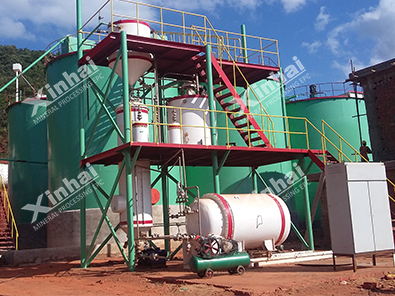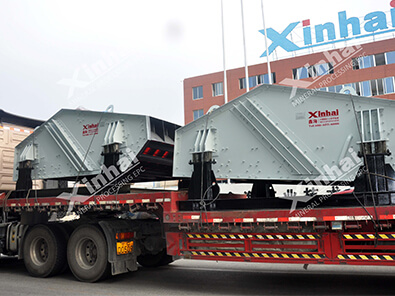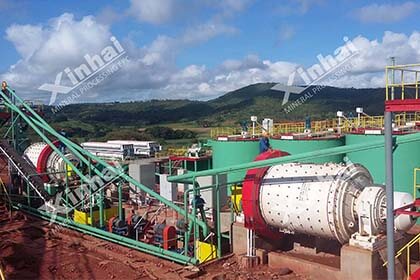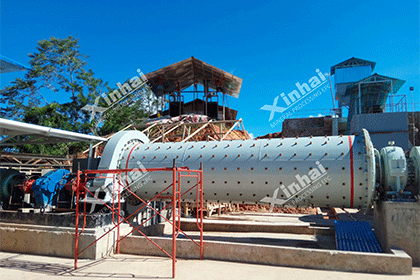A Comprehensive Guide to Gold Ore Automation Processing Systems
 Laura
Laura
 Nov 25, 2024
Nov 25, 2024
 221
221
If you want to know more details about equipment, solutions, etc, please click the button below for free consultation, or leave your requirements!
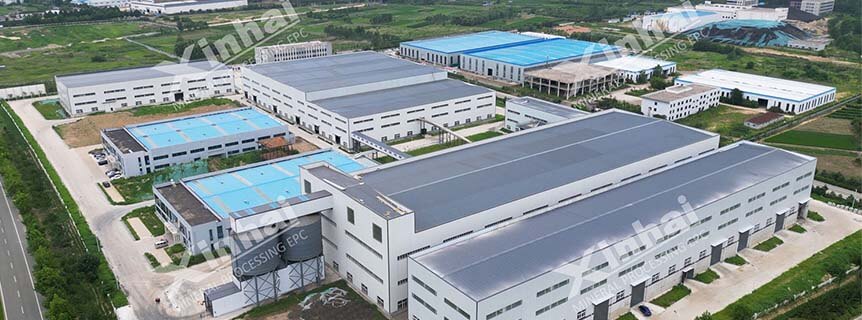
( Panorama of the mineral dressing plant )
The gold mining industry has undergone significant transformations over the years, particularly with the advent of automation and advanced processing technologies. Automation in gold ore processing not only enhances efficiency but also improves safety, reduces operational costs, and increases overall productivity. This comprehensive guide explores the various aspects of gold ore automation processing systems, including the technologies involved, benefits, challenges, and future trends.
01Understanding Gold Ore Processing
Back1. What is Gold Ore Processing?
Gold ore processing refers to the series of operations involved in extracting gold from raw ore. This includes crushing, grinding, concentration, and extraction methods that vary based on the type of ore and the desired purity of gold. Automation plays a crucial role in optimizing these processes, ensuring consistent quality and efficiency.
2. The Importance of Automation in Gold Processing
Automation in gold ore processing is vital for several reasons:
1) Increased Efficiency: Automated systems can operate continuously, leading to higher throughput and reduced downtime.
2) Improved Safety: Automation reduces the need for human intervention in hazardous environments, minimizing the risk of accidents.
3) Enhanced Data Management: Automated systems provide real-time data collection and analysis, facilitating better decision-making.
4) Cost Reduction: By optimizing resources and minimizing waste, automation can significantly lower operational costs.
02Key Components of Gold Ore Automation Processing Systems
Back1. Crushing and Grinding
The first step in gold ore processing is breaking down the ore into smaller particles to liberate the gold. Automation in this stage involves:
Automated Crushers and Grinders: These machines are equipped with sensors and control systems that monitor and adjust the crushing and grinding processes in real-time, ensuring optimal particle size.
Control Systems: Advanced control systems can regulate the feed rate, power consumption, and operational parameters, improving efficiency and reducing energy costs.
2. Concentration
After crushing and grinding, the next step is to concentrate the gold from the ore. This can involve several automated methods:
Gravity Separation: Automated jigs and shaking tables can efficiently separate gold from other minerals based on density.
Flotation: Automation in flotation systems includes automated reagent dosing, air flow control, and froth management, which enhance gold recovery rates.
3. Leaching
Leaching is a critical process in which chemicals are used to dissolve gold from the ore. Automation in leaching processes includes:
Automated Chemical Dosing Systems: These systems precisely control the amount of chemicals added to the leaching solution, optimizing the extraction process.
Real-Time Monitoring: Sensors continuously monitor variables such as pH, temperature, and concentration to ensure optimal leaching conditions.
4. Filtration and Separation
After leaching, the gold-rich solution must be separated from the residual ore. Automation aids in this process through:
Automated Filters: These systems can continuously filter the solution, removing impurities and recovering gold particles.
Centrifuges: Automated centrifuges enhance the separation process by using high-speed rotation to segregate gold from other materials.
5. Refining
The final step in gold ore processing is refining, where the extracted gold is purified. Automation plays a significant role in:
Electrowinning and Smelting: Automated systems control the parameters of electrowinning and smelting processes, ensuring consistent purity levels of the final gold product.
Quality Control: Advanced analytical instruments are integrated into the refining process to continuously monitor the quality of the gold being produced.
03Benefits of Automation in Gold Ore Processing
Back1. Increased Productivity and Efficiency
Automated systems can operate around the clock, significantly increasing the amount of ore processed. This continuous operation reduces the time needed for processing and maximizes output.
2. Enhanced Safety
By minimizing human intervention in potentially dangerous processes, automation reduces the risk of accidents. Remote monitoring and operation capabilities allow operators to manage processes from a safe distance.
3. Improved Precision and Quality
Automation ensures that processes are carried out with high precision, leading to consistent product quality. Automated systems can respond to changes in ore characteristics or processing conditions in real-time, optimizing the recovery of gold.
4. Cost Savings
Although the initial investment in automation technology can be substantial, the long-term savings in labor, energy, and material costs often outweigh these expenses. Automated systems reduce waste and enhance resource utilization, contributing to overall cost efficiency.
5. Better Data Management and Analysis
Automated systems provide real-time data collection and analysis, enabling operators to make informed decisions based on current processing conditions. This data-driven approach enhances process optimization and operational planning.
04Challenges of Implementing Automation
Back1. High Initial Investment
The cost of implementing automated systems can be significant, posing a barrier for some mining operations, particularly smaller operations. However, many companies view this as a long-term investment that will yield substantial returns.
2. Integration with Existing Systems
Integrating new automated systems with existing processes can be complex. Companies must ensure compatibility and may need to retrain staff to operate new technologies effectively.
3. Technical Expertise
Automation requires skilled personnel to manage and maintain advanced systems. There may be a shortage of professionals with the necessary expertise in automation technologies, necessitating investment in training and education.
4. Dependence on Technology
Increased reliance on automated systems can lead to vulnerabilities. Technical failures or cyber threats can disrupt operations, making it essential to have contingency plans in place.
05Future Trends in Gold Ore Automation Processing
Back1. Artificial Intelligence and Machine Learning
The integration of AI and machine learning in gold ore processing is set to revolutionize the industry. These technologies can analyze vast amounts of data to predict outcomes, optimize processes, and improve decision-making.
2. Remote Operations and Monitoring
The trend towards remote operations is growing, allowing operators to manage processes from anywhere in the world. This can enhance safety and reduce the need for personnel on-site in hazardous environments.
3. Sustainable Practices
As environmental concerns become more pressing, automation will play a crucial role in developing sustainable gold processing practices. Automated systems can optimize the use of resources, minimize waste, and reduce the environmental impact of mining operations.
4. Advanced Robotics
The use of robotics in gold ore processing is expected to increase. Automated robots can perform repetitive tasks, such as sampling and maintenance, improving efficiency and safety.
5. Enhanced Data Analytics
As mining operations increasingly adopt automation, the volume of data generated will grow. Advanced data analytics tools will be essential for interpreting this data, enabling companies to optimize their operations further.
06Conclusion
BackThe automation of gold ore processing systems represents a significant advancement in the mining industry. By enhancing efficiency, improving safety, and reducing costs, automated systems are transforming how gold is extracted and processed. While challenges exist in implementing these technologies, the benefits far outweigh the drawbacks.
As the industry progresses, embracing automation will be essential for mining operations to remain competitive and sustainable. Companies that invest in advanced processing systems and technologies will be better positioned to meet the growing demand for gold while minimizing their environmental impact. The future of gold ore processing is undoubtedly automated, and those who adapt to these changes will thrive in this dynamic industry.
Contact us and learn more about Gold Ore Automation Processing!
 +86 18716000713
+86 18716000713 xlyin@xinhaimining.net
xlyin@xinhaimining.net




 Message
Message Chat Now
Chat Now



